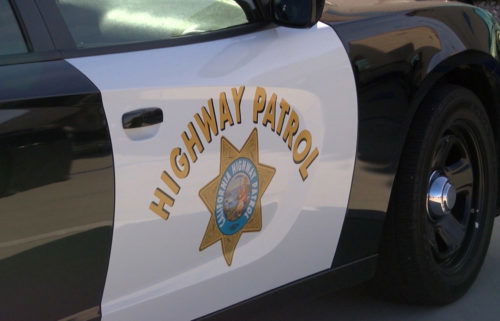Flood Warnings, Evacuations And Tsunami Advisory Canceled
LOS ANGELES – A storm dumped rain on the Station fire burn areas of Los Angeles County, but no major mudslides occurred and evacuation orders and a flash flood warning were canceled, according to the National Weather Service and county officials.
The Weather Service canceled the warning for flash flooding and debris flows at 5:45 p.m.
The mandatory evacuation orders were lifted at 6:30 p.m. after evaluation of the weather, flood control systems and roadway access, said Nicole Nishida of the Los Angeles County Sheriff’s Department.
Before tapering off Saturday afternoon, the rain, sometimes heavy, dumped about an inch to an inch and a half over much of the Southland.
About 1.6 inches fell in Burbank, beating the record of 1.53 inches for this date set in 2007, according to the Weather Service.
In La Canada Flintridge and La Crescenta, which are below where the Station fire broke out last summer, 178 homes were ordered to be evacuated by 6 p.m. Friday, but most residents chose to sign waivers and stay behind. About 20 percent of the residents complied with the sixth evacuation order of the rainy season.
Only residents with valid identification will be allowed re-entry into the evacuation areas, Nishida said.
Parking restrictions were also lifted, but officials said residents should park in their driveways to allow heavy equipment to work in the area.
During a major storm Feb. 6, nine homes along Ocean View Boulevard in La Canada Flintridge’s Paradise Valley neighborhood were destroyed or damaged by mud and water intrusions, and more than 40 properties sustained some damage.
A boulder that clogged a culvert draining the Mullally catch basin was blamed for much of that flooding.
As a precaution, county roads in the burn areas were also closed over the weekend of the threat of debris slides, but no major damage or injuries were reported in the burn areas or foothills, including La Canada Flintridge and La Crescenta, said Bob Spencer of the Los Angeles County Department of Public Works.
“There have been no mud flows, and no flooding,” Spencer said. “The debris basins held up and did their jobs.”
Earlier in the day, two strong pulses of heavy rain caused minor mudflows, and filled up two critical debris basins with what Spencer described as “a muddy chocolate broth.”
“Everything is functioning exactly as designed,” he said, as he looked at the Mullally and Pickens basins, along the upper reaches of Ocean View Boulevard in La Canada Flintridge.
Immediately below the steep, fire-scarred slopes of last summer’s Station fire in the San Gabriel Mountains, rocks and gravel swept out of the mountains between houses and into streets. But Spencer said no water, mud or rocks overflowed onto streets from flood basins.
In Tujunga, several roads were blocked when low areas filled with heavy runoff and rocks washing across them.
Los Angeles city fire trucks said the “Arizona crossings” were too deep for their large trucks to cross, but firefighters had been stationed on both sides the flood areas in anticipation of the high flows.
Southland freeways were snarled by dozens of traffic crashes, including a series of pileups on the Golden State (5) Freeway near San Fernando that entrapped some people, and injured at least nine.
The first band of rain hit overnight and dropped 1.26 inches of rain at La Canada, according to automated county rain gauges. In the foothills above, 1.97 inches fell at the Clear Creek ranger station, near Mount Wilson.
Elsewhere in the county, the 2.56 inches that fell in the mountains above western Malibu was the largest rainfall accumulation reported in the county. Desert communities reported about a half inch of rain.
The recently cleaned-out Mullally and Pickens catch basins filled to the spillways by 6 a.m., and water flowed harmlessly into the flood control channel and headed toward Glendale and the Los Angeles River downstream.
The slurry of ash, dirt and burned vegetation drained through slotted pipes at the bottom of the debris basins, lowering the water level before the second pulse hit.
Some surface streets in the San Fernando Valley flooded.
Balboa and Burbank boulevards and Woodley Avenue were closed through the Sepulveda Dam Recreation Area due to the potential for flooding in the park, which is a flood control and water spreading basin for the Los Angeles River and creeks draining the San Fernando Valley.
Meantime, a massive earthquake in Chile triggered tsunami advisories along the California coast, including the Southland, but no major waves or damage occurred.
A crowd of spectators gathered on the Santa Monica Pier, but the predicted 12:25 p.m. arrival time of the big wave passed without any impact.
A high surf advisory remains in effect until 9 p.m. Sunday as a result of stormy weather, but a tsunami advisory was canceled shortly after 8 p.m.
More showers and isolated thunderstorms with hail are possible Saturday night and early Sunday, according to the Weather Service.
Sunday afternoon and Monday are expected to be dry and mostly sunny, but there’s a 20 percent chance of more rain Tuesday and Wednesday and again next Saturday.



